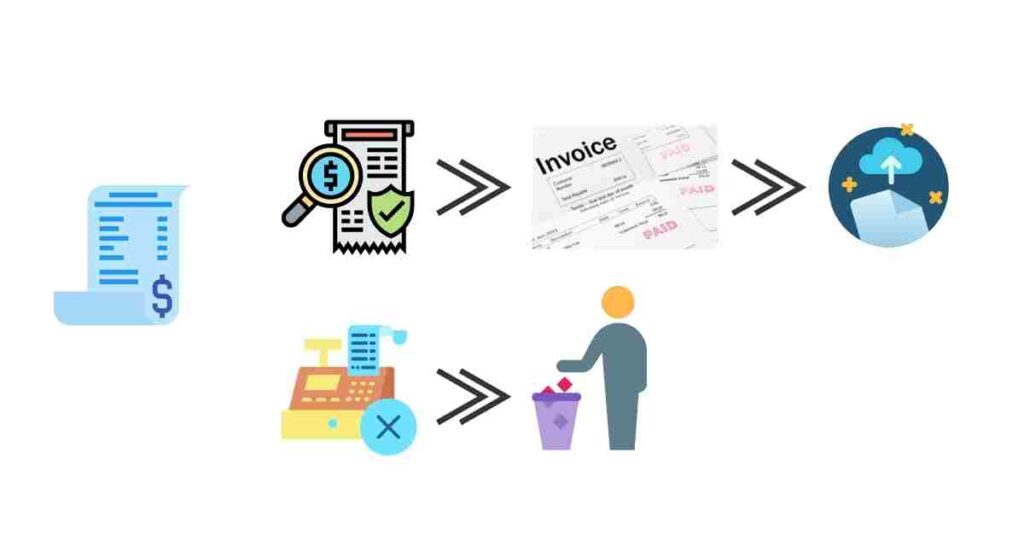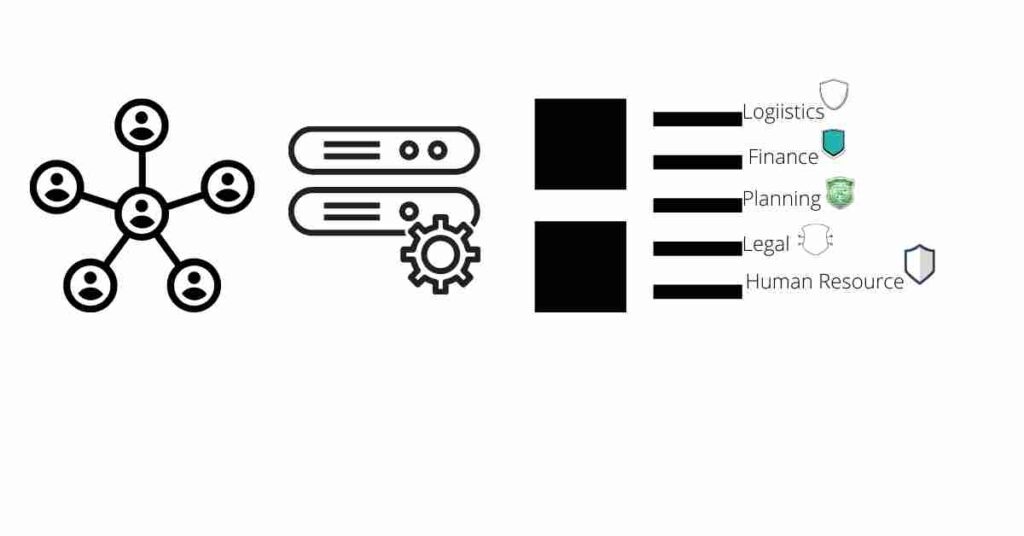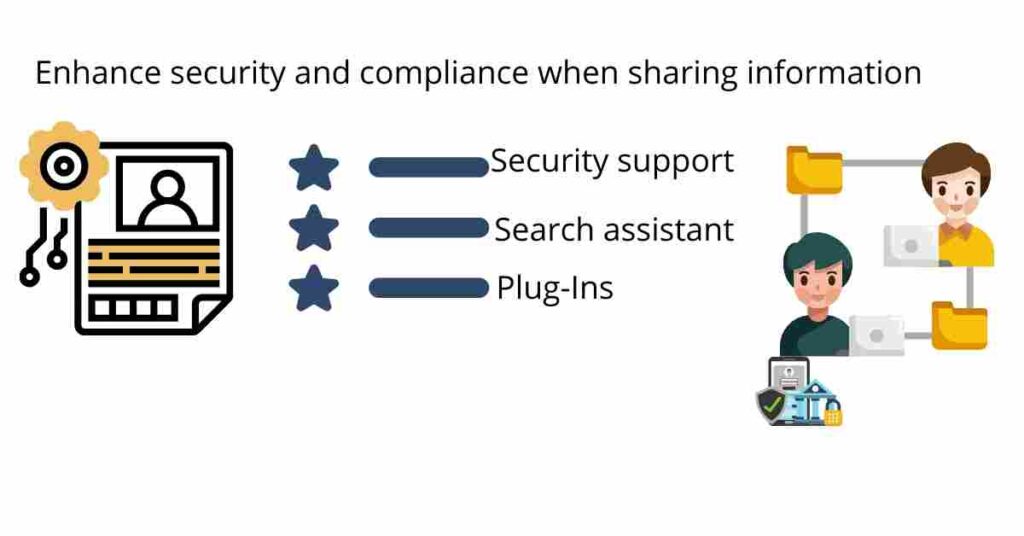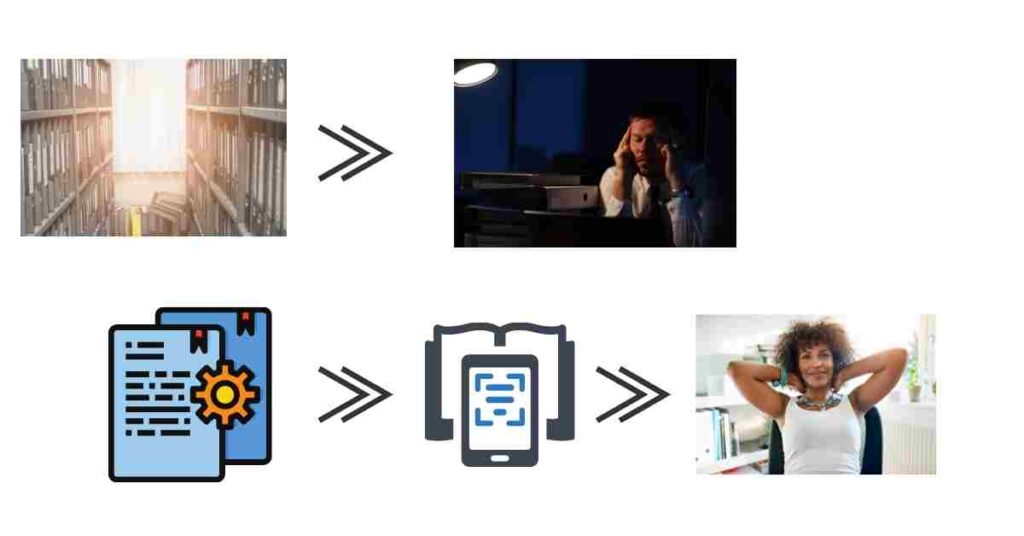How can you successfully implement a document management system?
Organizations handle large volumes of paper documents in their every day operations. They are among the largest unstructured data sources within organizations.
In fact, according to facts and figures by InfoRouter, 95% of organizational information exists on paper.
Although they provide critical information that aids in decision making, how you handle documents can have a significant impact on your organization’s success.
If you get it right, you could well be on your way to better collaboration among teams and decision making but if you get it wrong, you could easily lose vital information or find yourself paying hefty court fines due to non-compliance.
Implementing a document management system is therefore essential to the effective document handling process in your organization.
You can enjoy better access to documents, improved regulatory compliance, and enhanced collaboration due to better information sharing among teams.
However, transitioning from paper-based to electronic document management may not be a straightforward process.
In this article, we’ll go through a 5 step process on how to implement a document management system in your organization.
Let’s get started.
1. Understand Your Business Functions
Every organization functions differently, meaning they may have documents that are unique to their tasks.
The first step when considering implementing a document management system is therefore identifying all the areas in your organization that would benefit from its implementation.
Accordingly, you need to assess your current organizational tasks and understand the documentation process.
An effective examination of your current business functions in relation to document management involves exploring the following elements:
- How documents are collected or received.
- Their management, whether pending, approved, or rejected.
- How documents are transmitted and secured.
- Their disposal.

This helps you hit the ground running when you are implementing a document management system.
For instance, it assists in determining the number of licenses required depending on the functions you want to implement in your document management.
You can choose to purchase licenses for multiple users if you want to enhance easy collaboration through information sharing among different teams or for a single user if your only need is to create an easily searchable repository.
Actually, a case study of MSD, reveals that it was able to share files easily after transforming their document management processes with Laserfiche. This was possible because Laserfiche is so easy to use.
2. Define Your User Types
Organizational departments produce different kinds of documents for example invoices in accounting and contracts in legal.
They are among the unstructured data sources that provide insights into the performance of departments and your organization in general.
However, sharing information among employees in different departments when documents are in hard-copy can be challenging, especially when they can’t be retrieved easily.
Actually, reports by McKinsey reveal that employees spend 1.8 hours every day searching for documents.
In addition to that, unauthorized third party access to documents, either due to their exposure or displacement can lead to data breaches which have negative consequences to your organization.

An important approach you can take when determining how to implement a document management system is to define your user types and the authorities they need.
In this step, you need to identify the different users and their priority within the system. High-need users such as those in logistics departments, due to the number of documents they handle, need to be given first priority.
An ideal document management system gives you the ability to implement a selective and secure security protocol for your organizational documents to determine access privileges of users.
This helps in determining those who can use the system through their credentials, like security labels and hierarchical roles.
3. Select Only Relevant Features
A document management system can come in handy if properly implemented in the organization.
Simply having one doesn’t mean that it will make document access easy for users.
This is because particular features can make it complex to navigate, while lack of other features such as security support can make it challenging to share information due to potential data leaks.
Successfully implementing a document management system depends on the features you choose, like the security and search support, and how well they fit into your organizational functions to help employees navigate these unstructured data sources.

They enable you to smoothly integrate the document management system into your organization while ensuring ease of use by employees and security of documents.
For instance, a security feature can allow you to hide and redact particular sections within documents containing sensitive information like employees’ social security numbers from other users.
This makes it easy for you to share documents for seamless collaboration with other team members, vendors, and partners without having to worry about information leaks, ultimately making you compliant to laws such as GDPR.
A case study reveals that Hutch was able to observe regulatory compliance by deploying Globodox which simplified audits by regulatory bodies.
It made it easier for them to access the CAF information they needed from the millions of documents they were handling.
4. Automate Repetitive Organizational Tasks
One of the challenges organizations face when handling documents is the repetitive nature of sifting through large files and storage cabinets when searching for particular documents.
This results in decision making delays and reduced productivity among employees when they can’t access information easily and on time.
Actually, according to a survey by Elastic, 60% of respondents spend their time searching for documents instead of working.
When you’re considering transitioning to an electronic document management system, have all the documents that you need to convert into electronic format in place.
Once you’re started implementing a document management system, the next step is to automate repetitive tasks such as document retrieval by scanning documents using a scanner.

It is quite easy because unlike traditional methods where paper documents are scanned as images, a document management system captures the printed documents as texts because it comes with an inbuilt Optical Character Recognition Software.
The system reads and parses information through the scanner to produce electronic versions of the documents with great accuracy, making it easy and fast for you to store and retrieve from the new document repository.
By configuring your document management system to scan specific pages in different documents, it can read and parse metadata while storing the information in corresponding metadata fields, ultimately saving you time.
5. Integrate With Organizational Applications
A document management system needs to be easily and securely integrated with other applications within organizational applications, software, and hardware.
Otherwise, users would have to use separate usernames and passwords to log into the document management system and their windows systems, which can be confusing and challenging to remember.
Forgetting a password would therefore mean that a user is locked out of the document management system which would hinder them from accessing essential documents.
When thinking about how to implement a document management system in your organization, keep in mind that integrating it with other organizational applications and software can speed up its user adoption and increase productivity in the organization.

It also saves you time and lowers costs associated with adding users from your previous database and funding multiple document storage systems respectively.
Consider implementing a document management system that comes with Windows Active Directory integration support to allow you import users directly from your organizational database.
This not only makes importing users easier but also simplifies the process of gaining access to the new document management system.
A software consultancy working with AD realized it was being held back due to the complex and fragile setup that made it challenging to access their documents. By switching to Thoughtworks which allowed passwordless authentication, it was able to liberate workflows without sacrificing security.
Conclusion
Document management is one of the most challenging tasks organizational teams have to contend with.
A document management system is therefore essential for every organization that aims to improve productivity by reducing the workload that comes with handling large volumes of documents.
In fact, according to research by Nitro, 68% of respondents say handling documents electronically helps increase their productivity.
Successfully implementing a document management system requires you to follow steps such as understanding your business functions, defining your user types, and selecting suitable features.
Having discussed those steps in detail, I hope you now know how to implement a document management system in your organization.
If you’re just getting started with the shift to electronic document management, first assess the areas in urgent need of a document management system and give them first priority for better document handling.

![5 Innovative Applications of Artificial Intelligence in Manufacturing [2021]](https://geokongo.com/wp-content/uploads/2021/09/Applications-of-Artificial-Intelligence-in-Manufacturing-2021-1024x536.jpg)


